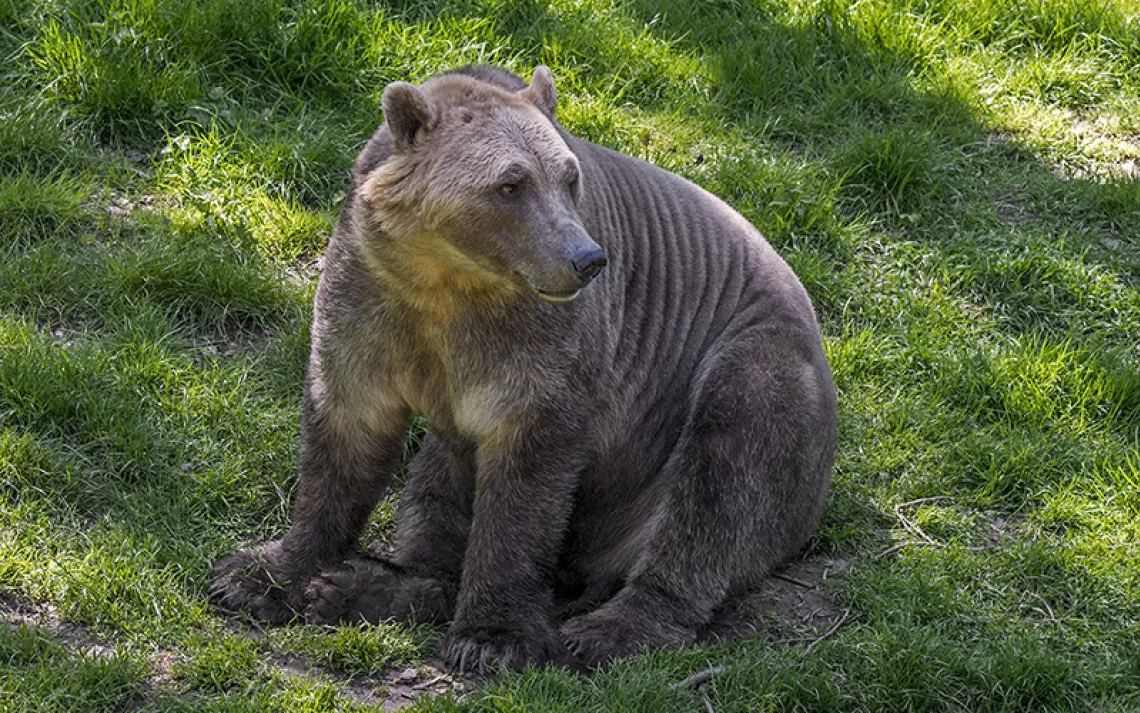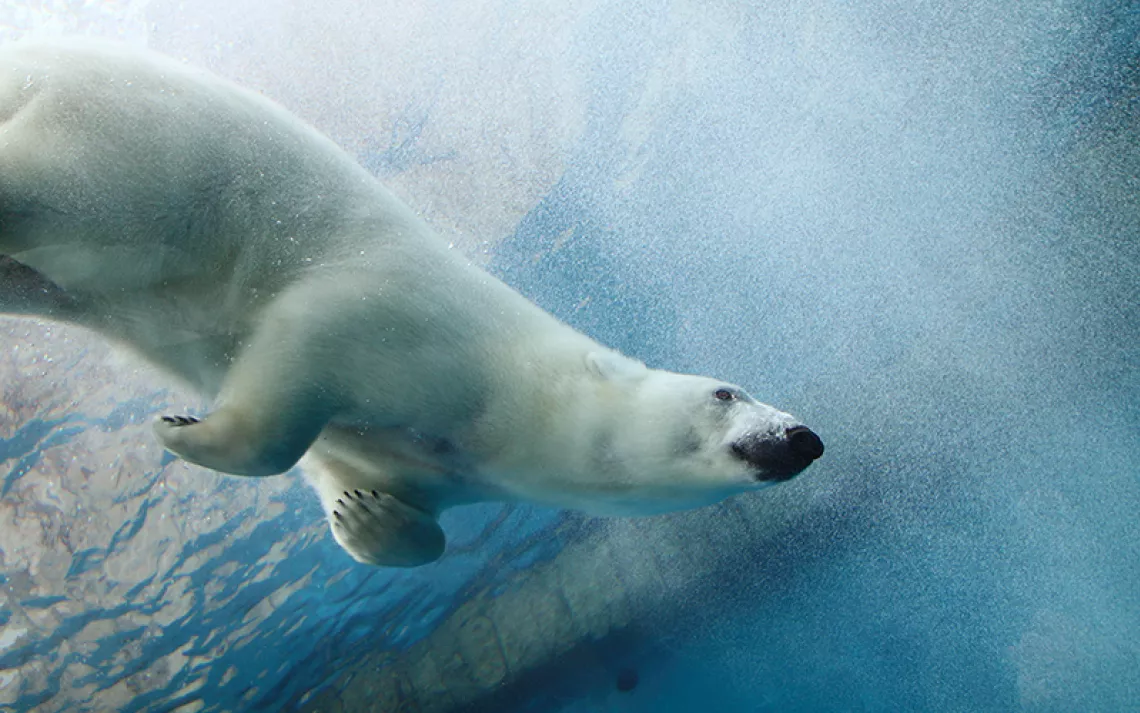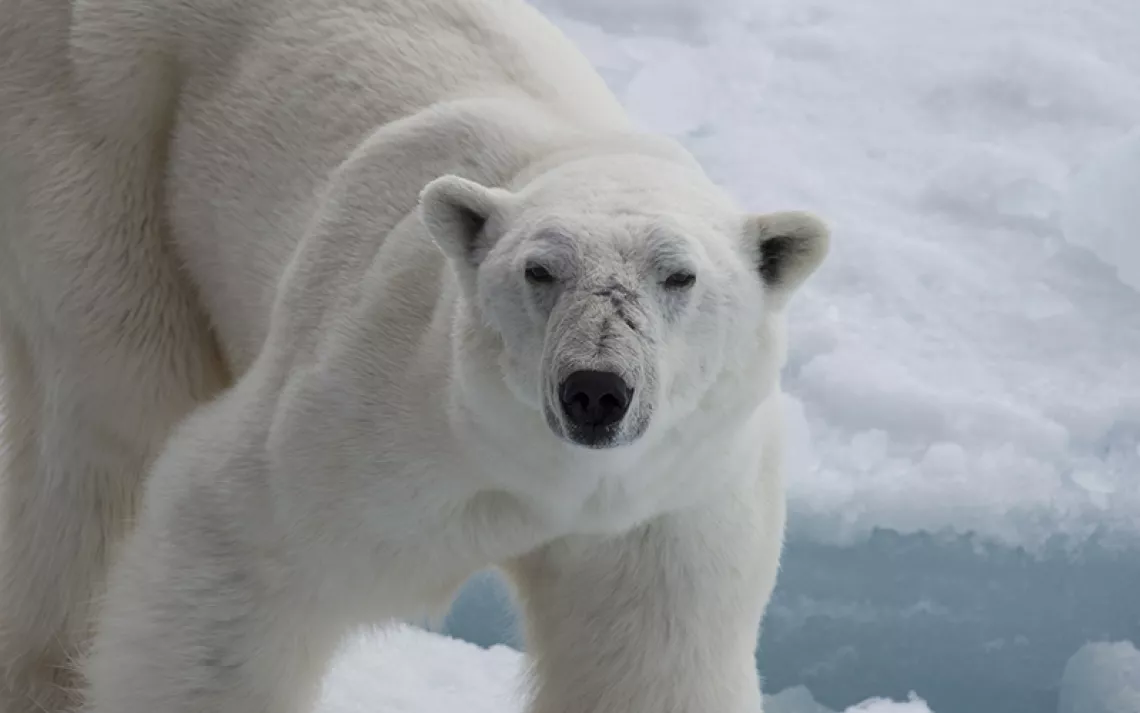Alaska Whale Hunt Keeps Polar Bears Alive
Welcome to Kaktovik’s bone pile
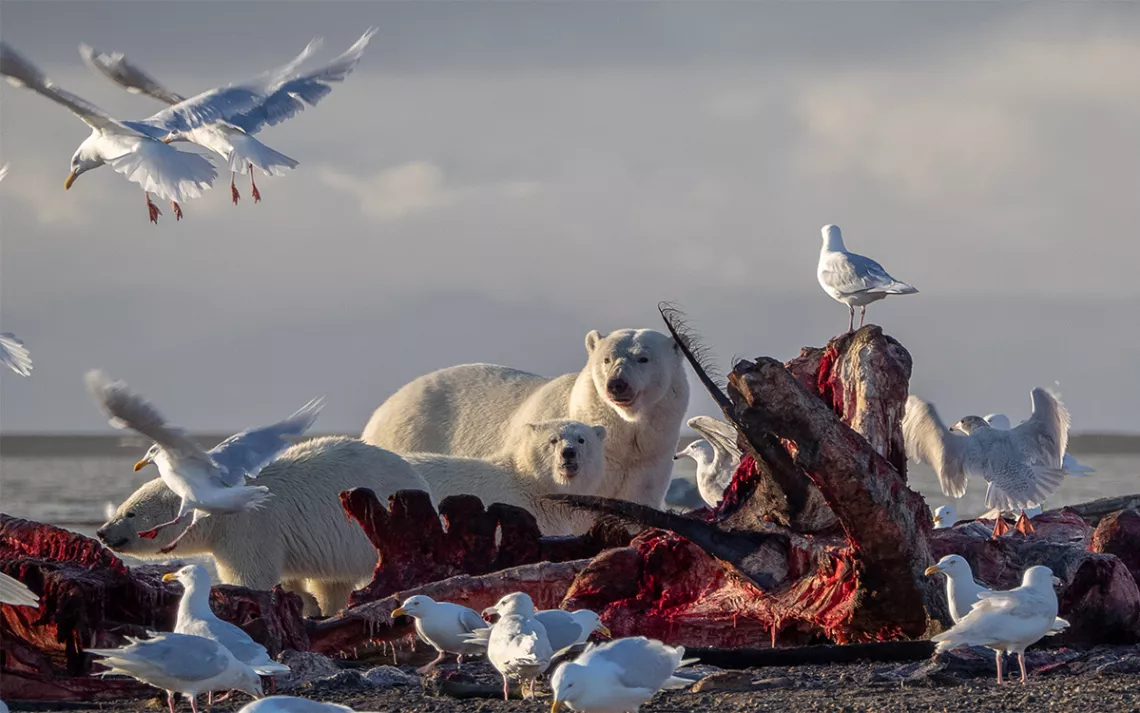
Photos by Michelle Theall
Polar bears in far northern Alaska are increasingly beleaguered by a decline in the sea ice on which they depend. But they are finding sustenance during the Arctic spring and summer months from an unlikely source: the discards from an Inupiat village’s legal subsistence hunting of bowhead whales.
An estimated 260 residents live in the town of Kaktovik, on an isolated four-mile stretch of Barter Island on the northern edge of the 20-million-acre Arctic National Wildlife Refuge, bordering the Beaufort Sea. Kaktovik hosts the United States’ largest population of endangered polar bears, which are drawn to it to feast on the carcasses of 60-foot, 80-ton bowhead whales. What might at first seem to be a dangerous problem has actually become a successful experiment in peaceful coexistence.
Traditional subsistence hunting by Inupiat people and other Native Alaskans dates back thousands of years. In the 1900s, commercial whaling by European Americans decimated the western Arctic pods, reducing counts from 30,000 to 3,000 in a few decades. The whalers rendered oil from the bowheads’ dense layer of blubber (up to 20-inches thick), which was used to lubricate machine tools, fuel lamps, and make soap. The whales’ baleen was a lucrative byproduct; known as the plastic of the 19th century, it was used to manufacture corsets, collar stays, buggy whips, and toys.
By 1930, commercial whaling had all but ceased due to declining stocks and was further restricted under the 1931 League of Nations Convention. It wasn’t until 1986 that the International Whaling Commission (IWC) finally banned commercial whaling altogether, while allowing indigenous peoples to continue to hunt if they adhered to a harvest quota determined by the IWC every five years.
While the bowhead remains a federally endangered species, the western Arctic maintains a healthy and growing population of 11,000 whales, which reproduce at a rate of 3 percent annually and are harvested at .1 to .5 percent. Alaska Natives are allowed 67 collective strikes (the take of a whale or attempt of a take) per year, dividing the meat shares between families, captain, and crew within 11 identified Alaska Eskimo Whaling Commission communities.
After the whale has been butchered, the meat blessed, shares divided, and the hunt celebrated, substantial portions of the whale remain on the shore. While meat shares are hung up to dry outside homes—next to discarded outboard motors, swing sets, and chained up sled dogs—the unusable parts of the bowhead are scooped up by front-loading earth movers and hauled away to the end of the airstrip, a spit of land that is as far from town as possible while still providing excellent access for scavenging polar bears.
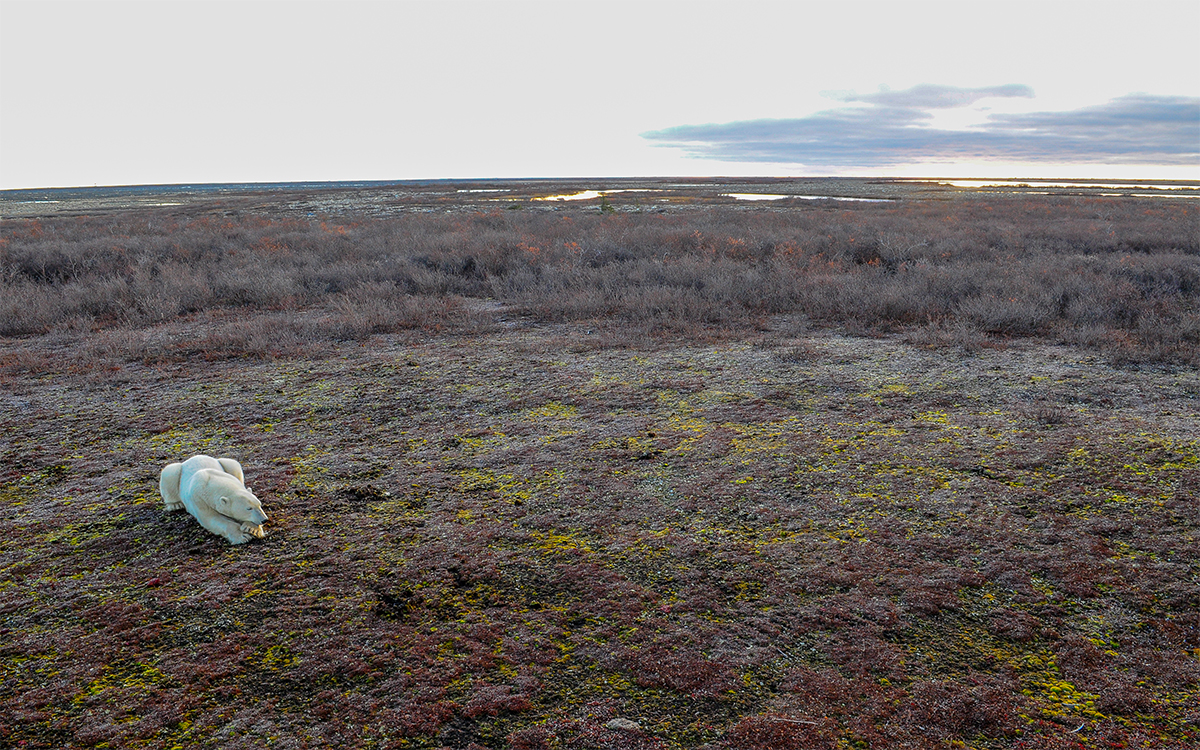
“We wanted to clean up the area where we cut up the whale and get it as far away from the village as possible,” says 30-year Kaktovik resident and whaler Ketil Reitan. When Reitan was whaling with his father-in-law in the 1980s, he says, there was still enough ice in the summer months for bears to continue to hunt seals from the sea ice, and they rarely came into town. “Now the ice is about 100 miles out,” he says. “The bears have learned they can find some food around Kaktovik.”
At the designated “bone pile,” 70 or more hungry bears can descend like vultures to pick at bowhead skeletal remains rising up like scaffolding from the earth. Walt Audi came to Kaktovik 54 years ago and built one of its first hotels, Waldo Arms. He says that the Kaktovik bears are healthier because they go into the winter well fed, but notes that there are other positives as well. “Local villagers enjoy watching and sharing their land with the bears,” he says, “and the tourism traffic benefits residents with jobs and tourism-related activities.” The few parts of the whale that aren’t used by the village or the bears are collected by biologists, contributing to some of the most comprehensive whale research on the planet.
The difference between Kaktovik bears and those that congregate near Churchill, Manitoba—the self-proclaimed “Polar Bear Capital of the World”—is substantial. In July, I watched a lone polar bear cross the Wapusk National Park in Churchill, scrounging for kelp. His skin hung loose on his frame, and his sluggish gait suggested starvation. I couldn’t help but think of this bear while watching the viral video a few months ago of a staggering polar bear in the same area. Bears wander into Churchill, a town with a population of 900 residents, to rummage for food, often winding up in the “polar bear jail” where they are given limited water and no food to discourage them from returning once they’re towed by helicopter back out into the tundra for release.
The hazing seems to be making the right impression on the bears, but it can’t alter the toll a warming climate takes on them. The bears’ primary food source is seal, and successful hunts occur atop the sea ice, where the bears wait for seals to surface for air. With ice now forming late and melting early, the bears have limited time to hunt and must go longer without eating. In addition, while polar bears are excellent swimmers, their search for sea ice takes them farther and farther out to sea, while they burn valuable calories.
One sign of the health of Kaktovik polar bears is the proliferation of twins and triplets, a factor directly tied to the nutrients a pregnant bear consumes before denning. Denning bears rely solely on their summer and fall fat stores for sustenance through birthing and nursing cubs until spring. When mama bears emerge months later, the sea ice must still be there in order for them to hunt or they will grow too weak to be able to nurse and protect their cubs. Early ice melt means that polar bear mothers may have to wait more than a year to hunt.
In Kaktovik, leftover whale substitutes for seal, and the results are hard to ignore. Beyond having more surviving triplets in tow, the bears appear fat, healthy, and energetic despite the lean summer months. That isn’t to say that they are out of danger: The bone pile helps, but scraps from a village will not be enough to sustain them if they can no longer hunt because of climate change.
 The Magazine of The Sierra Club
The Magazine of The Sierra Club

